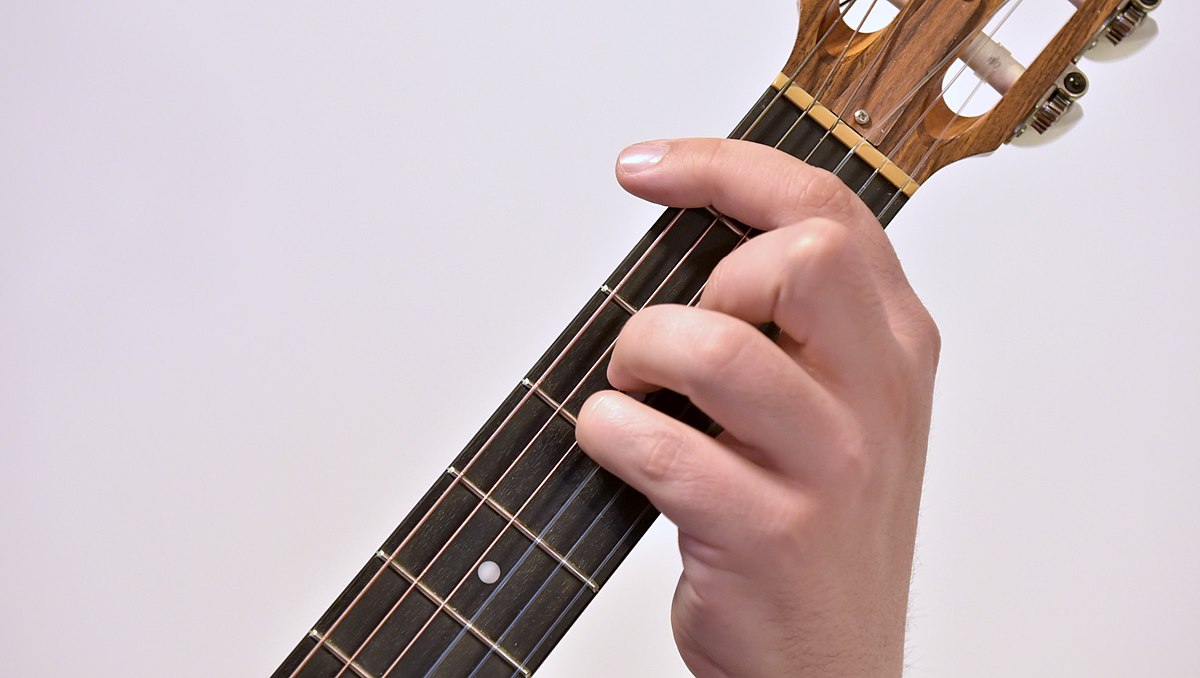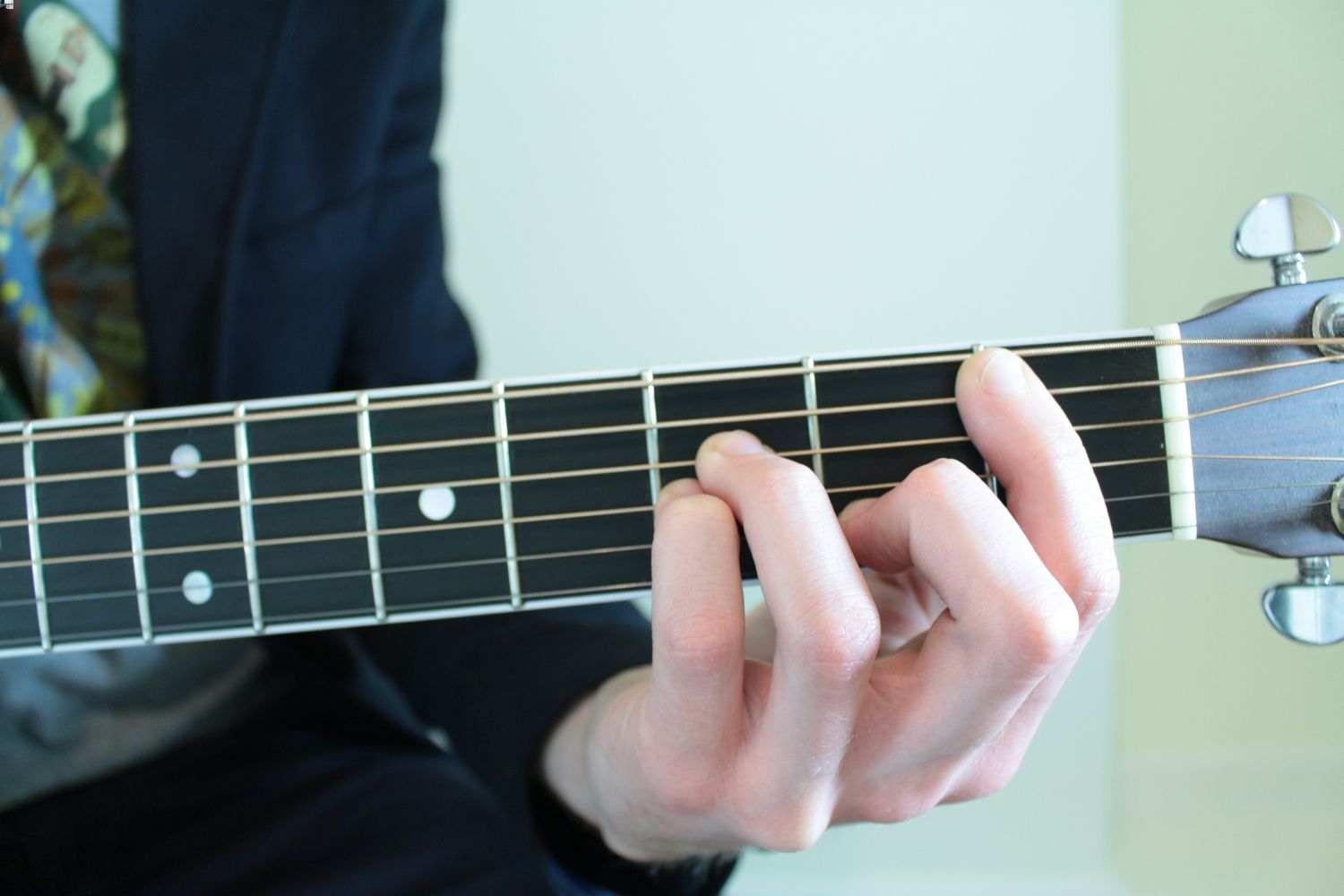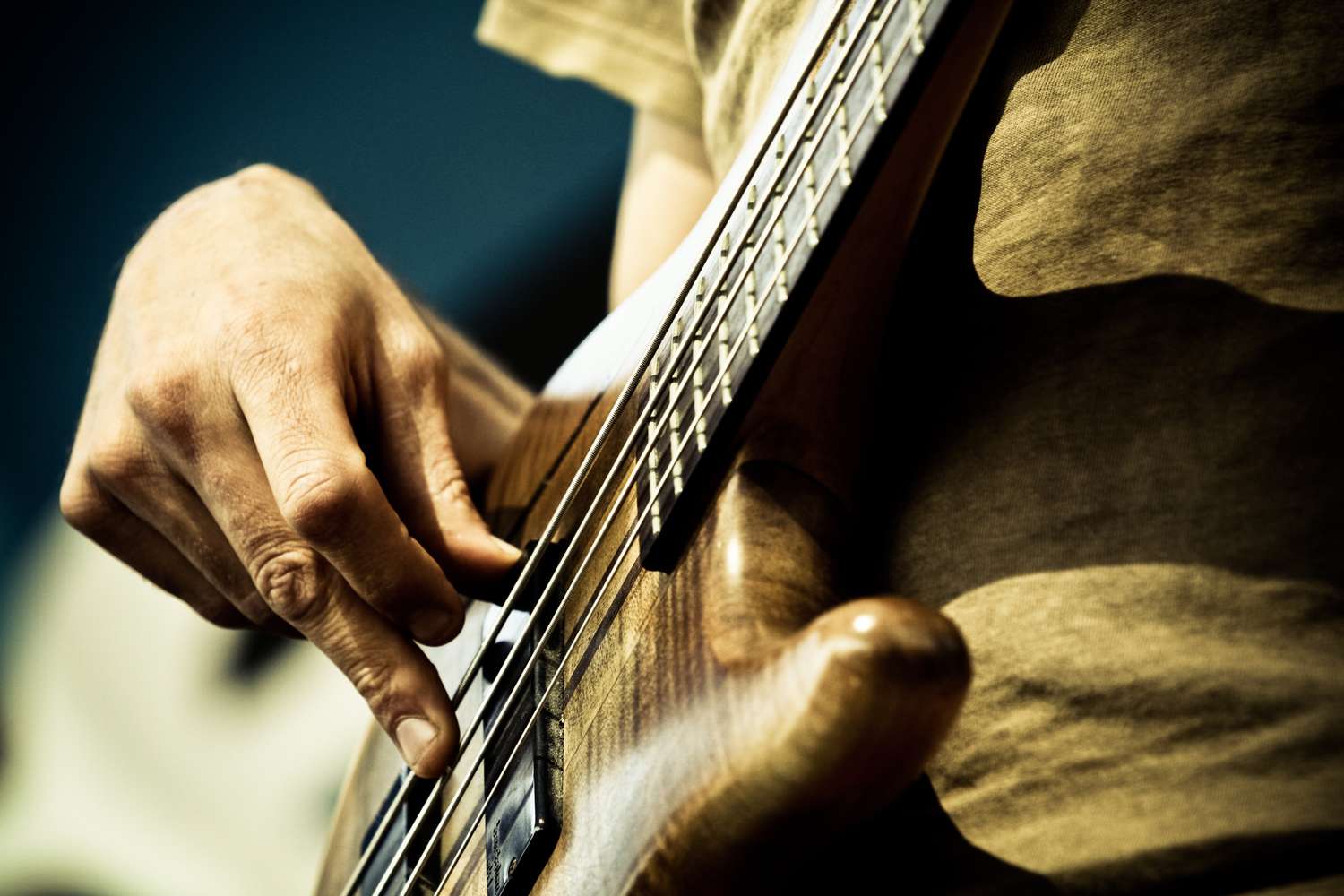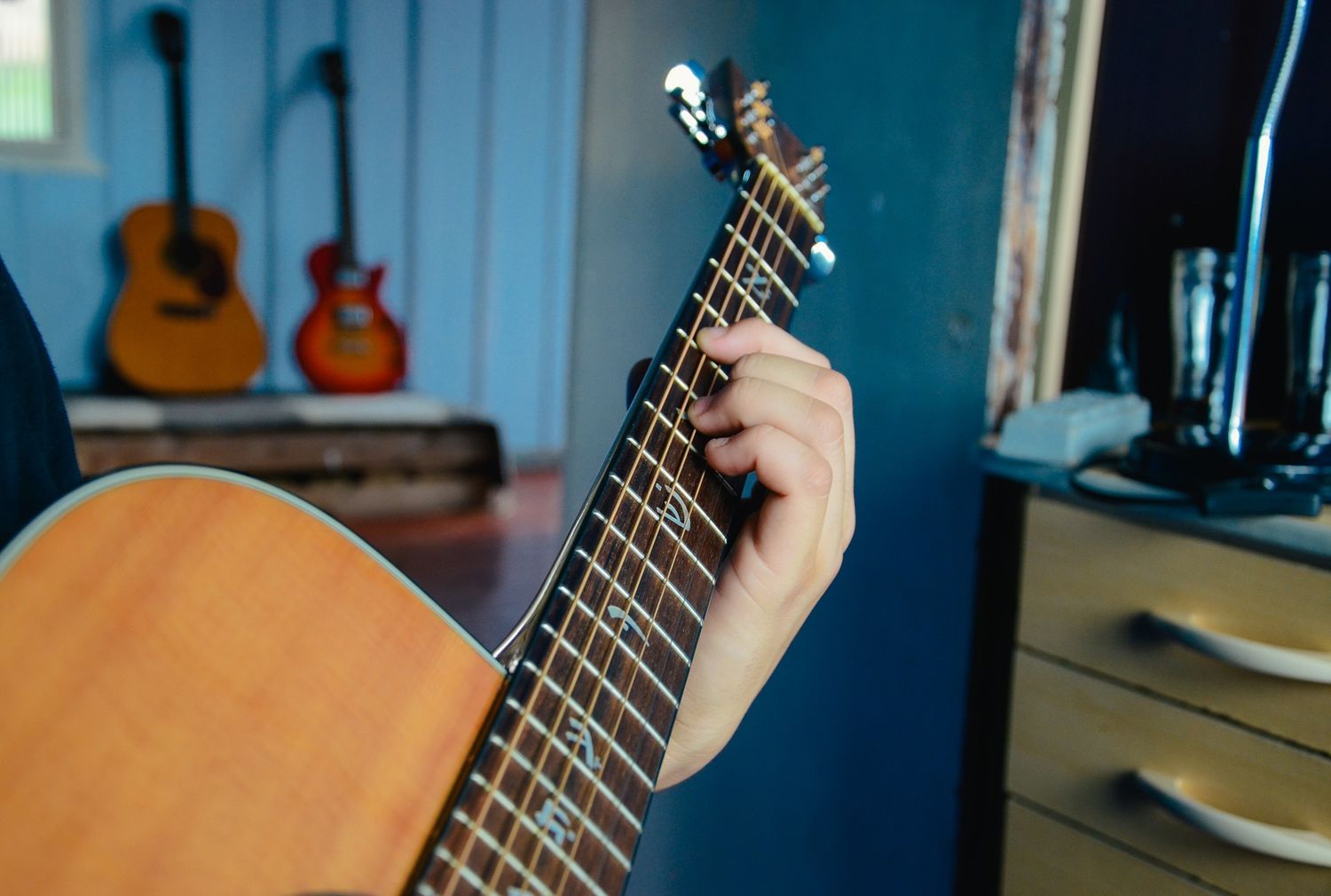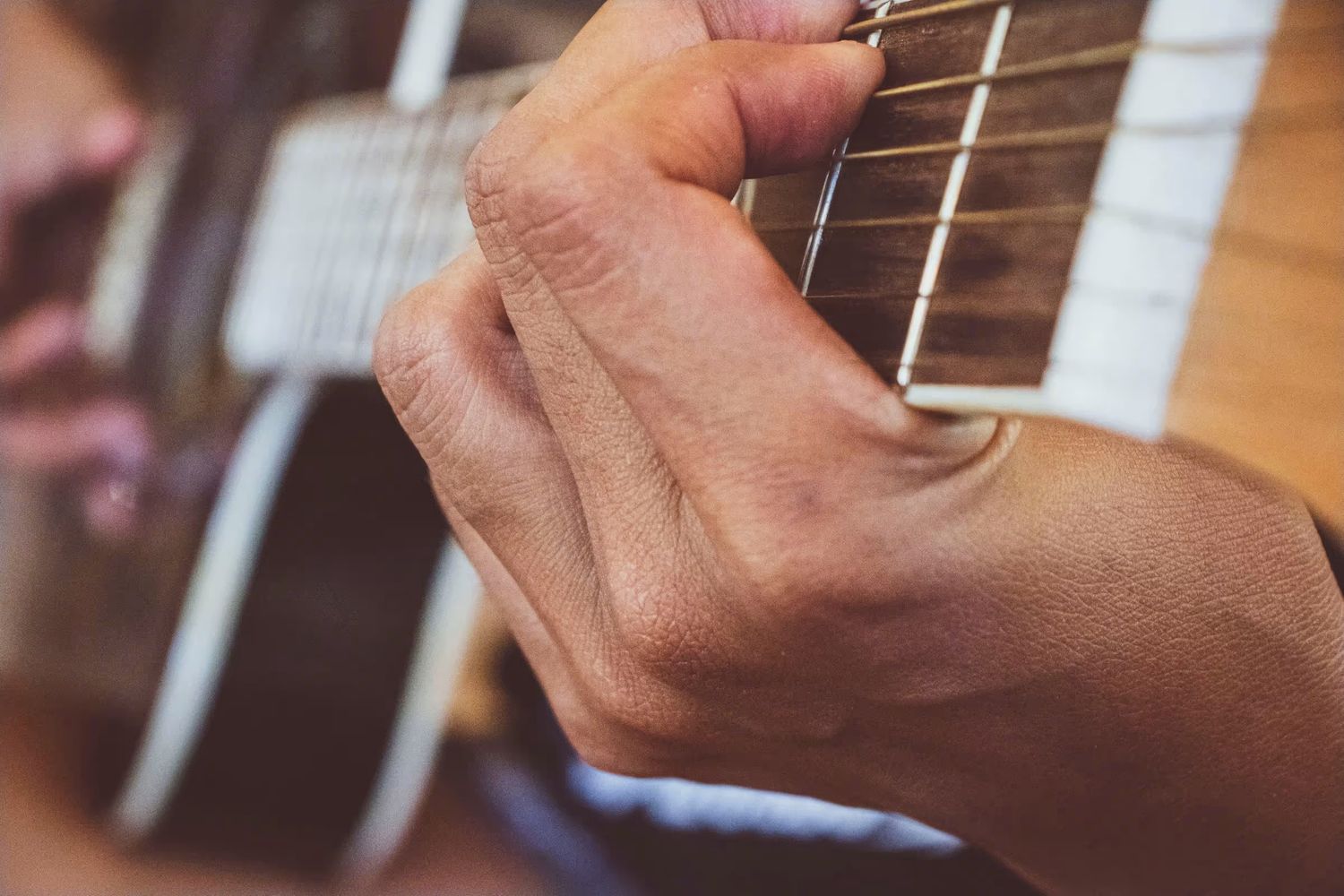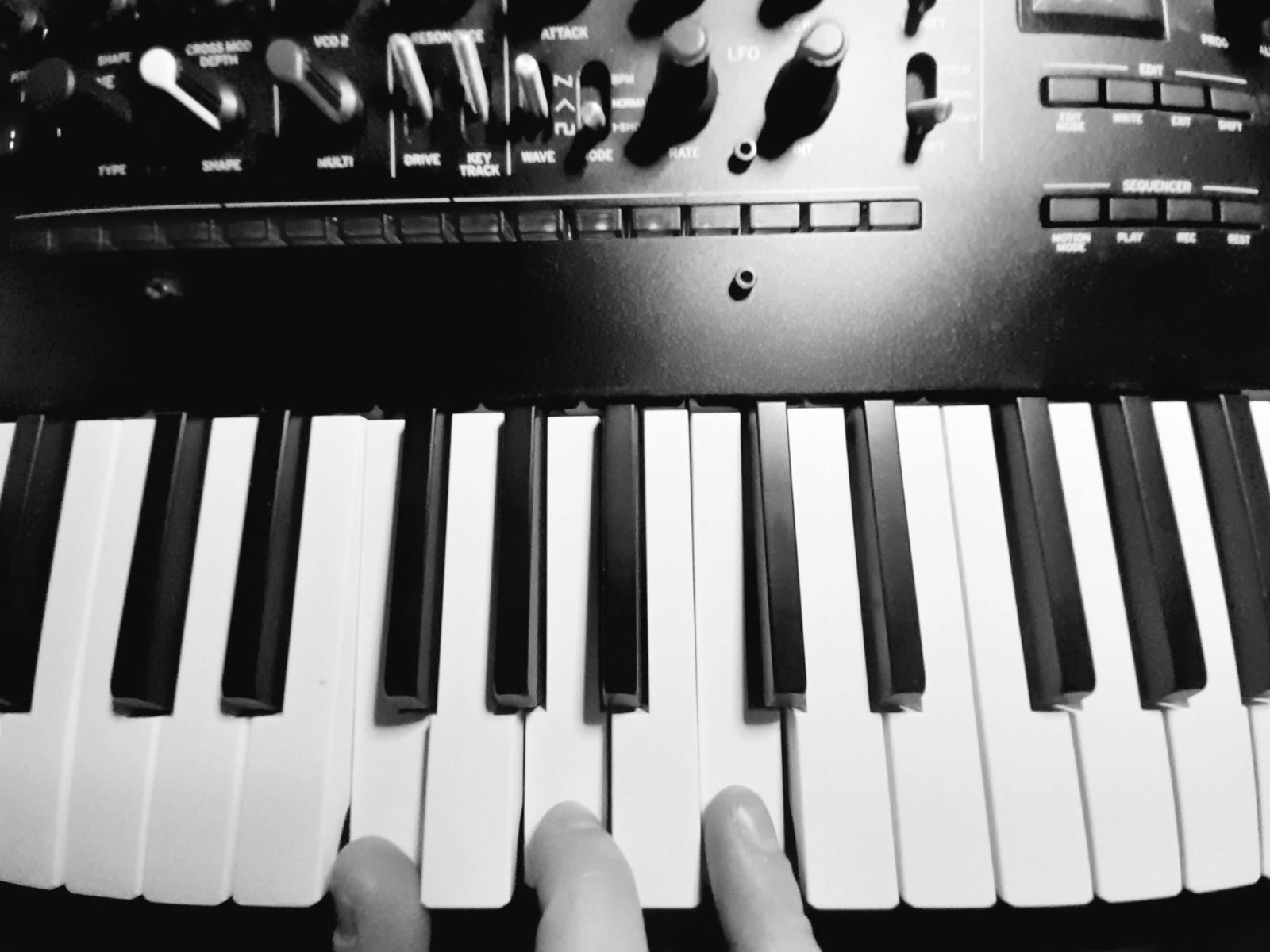Home>Instruments>Guitar>How To Play Basic Guitar Chords


Guitar
How To Play Basic Guitar Chords
Modified: February 15, 2024
Learn how to play basic guitar chords with our step-by-step guide. Master the fundamentals and start strumming your favorite tunes today!
(Many of the links in this article redirect to a specific reviewed product. Your purchase of these products through affiliate links helps to generate commission for AudioLover.com, at no extra cost. Learn more)
Table of Contents
Introduction
Learning to play the guitar is an incredibly rewarding journey. It’s a versatile instrument that can be found in almost every genre of music, and mastering the basics is the first step towards becoming a skilled guitarist. One of the fundamental aspects of playing the guitar is understanding and practicing basic chords. Whether you’re drawn to the soulful strumming of an acoustic guitar or the electrifying riffs of an electric guitar, mastering basic chords is essential for any aspiring guitarist.
As a beginner, it’s important to start with the basics and gradually progress to more complex techniques. Basic guitar chords are the foundation upon which the rest of your guitar journey will be built. They are the building blocks of countless songs and provide the harmonic framework for your musical expression. Understanding how to play basic guitar chords will not only allow you to strum along to your favorite tunes but also help you develop the dexterity and muscle memory needed to tackle more advanced techniques in the future.
Throughout this article, we will delve into the world of basic guitar chords, exploring both open chords and barre chords. We’ll provide step-by-step guidance on how to play these chords and offer valuable tips for practicing effectively. By the end of this journey, you’ll have a solid understanding of basic guitar chords and be well-equipped to embark on your musical endeavors with confidence and skill.
Understanding Basic Guitar Chords
Before diving into the practical aspect of playing basic guitar chords, it’s essential to grasp the theoretical foundation behind them. In music theory, a chord is a set of three or more different notes sounded together. On the guitar, these notes are typically played by strumming multiple strings simultaneously, creating a harmonious blend of tones.
Basic guitar chords are typically constructed from a combination of three notes: the root, the third, and the fifth. The root note of a chord defines its key and provides the foundational pitch around which the other notes are arranged. The third and fifth notes determine whether the chord is major, minor, or augmented, imparting its distinct tonal quality.
When represented on sheet music or chord diagrams, basic guitar chords are depicted by a series of dots and lines, indicating which frets and strings to press down. The strings are numbered from the thinnest (first string) to the thickest (sixth string), and the frets are the metal strips running perpendicular to the strings. By pressing down on specific frets and strings, different chord shapes are formed, each producing a unique sound.
It’s important to note that basic guitar chords come in various shapes and fingerings, allowing for versatility and adaptability across different musical contexts. Understanding the structure and composition of these chords lays the groundwork for fluently transitioning between them and incorporating them into your playing repertoire.
As we progress, we’ll delve deeper into the practical application of these concepts, guiding you through the process of playing open and barre chords. By combining theoretical knowledge with hands-on practice, you’ll soon find yourself strumming along to your favorite songs with confidence and precision.
Playing Open Chords
Open chords are among the first set of chords that aspiring guitarists learn, and they serve as the building blocks for countless songs. These chords are known for their rich, vibrant sound and are played in the open position, utilizing open strings to complement the fretted notes. The open position refers to playing chords that incorporate open strings, typically near the headstock of the guitar.
One of the most iconic open chords is the E major chord. To play this chord, place your index, middle, and ring fingers on the first fret of the third, fifth, and fourth strings, respectively, while leaving the remaining strings open. Strumming all six strings produces a bright and resonant E major chord, often used as the starting point for many popular songs.
Another essential open chord is the A minor chord. This melancholic yet versatile chord is formed by placing your middle and ring fingers on the second fret of the fourth and third strings, while leaving the other strings open. Strumming from the fifth string downwards creates the hauntingly beautiful sound of the A minor chord.
Mastering open chords involves not only memorizing the finger placements but also developing the muscle memory and finger strength required to switch between them seamlessly. As you practice transitioning between different open chords, focus on maintaining a relaxed yet firm grip on the fretboard to ensure clear and consistent sound production.
Open chords offer a gateway to the world of guitar playing, allowing beginners to strum along to their favorite songs with relative ease. As you familiarize yourself with open chords, you’ll begin to recognize their prevalence in popular music and appreciate their role in shaping the sonic landscape of countless compositions.
By dedicating time to practice and honing your technique, you’ll gradually internalize the distinct characteristics of open chords, paving the way for more advanced chord structures and playing styles. Embrace the journey of mastering open chords, and you’ll find yourself well-equipped to explore the boundless possibilities that the guitar has to offer.
Playing Barre Chords
Barre chords, also known as bar chords, are a fundamental component of the guitarist’s toolkit, offering versatility and mobility across the fretboard. Unlike open chords, which utilize open strings, barre chords are movable shapes that can be repositioned to play different chords up and down the neck. Mastering barre chords opens up a world of musical possibilities, allowing you to play a wide range of chords with just a few basic shapes.
One of the most common barre chords is the F major chord. To play this chord, use your index finger to bar all the strings at the first fret while forming an E major shape with your remaining fingers on the third fret. This versatile chord shape can be moved up and down the fretboard to play different major chords, providing a valuable tool for transposing songs to different keys.
Another essential barre chord is the B minor chord. By barring the second fret with your index finger and forming an A minor shape with your other fingers on the fourth fret, you can produce the hauntingly beautiful sound of the B minor chord. This movable shape allows you to play minor chords across the fretboard, adding depth and emotion to your musical repertoire.
Playing barre chords requires a combination of finger strength, dexterity, and precise finger placement. It’s common for beginners to experience initial discomfort or fatigue when first learning barre chords, but with consistent practice and proper technique, you’ll gradually build the necessary finger strength to fret the strings effectively.
As you delve into the world of barre chords, pay close attention to the placement of your index finger, ensuring that it presses down firmly across all the strings without any muted notes. Additionally, maintaining a relaxed yet firm grip on the guitar neck will contribute to clear and resonant chord production.
Embrace the challenge of mastering barre chords, as they offer a gateway to unlocking the full potential of the guitar. With perseverance and dedication, you’ll soon find yourself effortlessly navigating the fretboard, seamlessly transitioning between different barre chord shapes, and infusing your playing with newfound depth and versatility.
Tips for Practicing
Effective practice is the cornerstone of mastering basic guitar chords and progressing as a guitarist. Here are some valuable tips to enhance your practice sessions and optimize your learning experience:
- Consistent Practice: Set aside dedicated time each day to practice basic guitar chords. Consistency is key to reinforcing muscle memory and developing proficiency.
- Focus on Precision: Pay attention to the placement of your fingers and strive for clear and resonant chord production. Precision in your technique will yield a more polished and professional sound.
- Use a Metronome: Incorporating a metronome into your practice routine can help improve your timing and rhythm. Start with a slow tempo and gradually increase the speed as you become more comfortable with the chord transitions.
- Practice Transitions: Work on smoothly transitioning between different chords. Focus on minimizing the pause between chord changes and aim for a seamless flow of music.
- Relaxation and Posture: Maintain a relaxed posture while playing and avoid unnecessary tension in your hands and shoulders. Proper ergonomics and relaxation contribute to fluid and effortless chord transitions.
- Ear Training: Train your ear to recognize the sound of each chord. This will aid in developing a musical ear and help you identify chord progressions in songs more easily.
- Patience and Persistence: Learning basic guitar chords takes time and patience. Embrace the learning process and celebrate small victories along the way. Persistence and determination will lead to tangible progress.
- Explore Song Repertoire: Apply the chords you’ve learned to play songs you enjoy. This practical application will reinforce your chord knowledge and make the learning process more enjoyable.
- Seek Guidance: Consider taking lessons from a qualified instructor or utilizing online resources to supplement your learning. Constructive feedback and guidance can accelerate your growth as a guitarist.
By incorporating these tips into your practice routine, you’ll not only enhance your command of basic guitar chords but also develop a strong foundation for advancing to more complex playing techniques and musical expressions. Remember, consistent and focused practice is the key to unlocking your full potential as a guitarist.
Conclusion
Congratulations on embarking on the enriching journey of mastering basic guitar chords. As you’ve discovered, these foundational elements form the bedrock of your guitar playing, providing the essential building blocks for musical expression and creativity. Whether you’re strumming open chords with the resonance of an acoustic guitar or navigating the fretboard with the versatility of barre chords on an electric guitar, the skills you’ve cultivated will serve as invaluable assets throughout your musical endeavors.
By understanding the theoretical underpinnings of basic guitar chords and translating them into practical application, you’ve laid a solid groundwork for your musical growth. The ability to seamlessly transition between chords, produce clear and resonant tones, and infuse your playing with rhythm and emotion is a testament to your dedication and perseverance.
As you continue to hone your craft, remember that progress is a journey, not a destination. Embrace the learning process, celebrate your achievements, and remain open to new challenges and opportunities for growth. Whether you aspire to strum along to your favorite songs, write your own compositions, or perform for an audience, the proficiency you’ve gained in playing basic guitar chords will propel you toward your musical aspirations.
Lastly, keep the joy of music at the heart of your practice. Let the melodies you create and the songs you play be a source of inspiration and fulfillment. The guitar is not just an instrument; it’s a medium through which you can convey your emotions, connect with others, and embark on a lifelong journey of musical discovery.
With each chord you master and every note you play, you’re adding depth and richness to your musical repertoire. The world of guitar playing is vast and ever-evolving, offering boundless opportunities for creativity and self-expression. As you continue to explore and expand your musical horizons, may the chords you play resonate with passion, purpose, and the joy of creating music.


